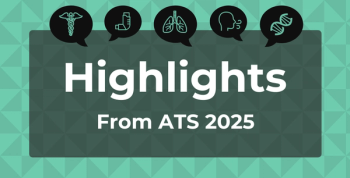
Fear of COVID-19 Limits Patients’ Uptake of Ophthalmic Care
Fear of exposure to COVID-19 is associated with patients missing ophthalmic care appointments, suggesting the potential importance of conveying practices’ infection-control measures, according to results of a non-validated survey.
Fear of exposure to COVID-19 is associated with patients missing
In outpatient eyecare centers across the United States, the COVID-19 pandemic initially reduced patient volumes by 79%, marking the largest decline of any specialty, researchers wrote.
Although volume has since rebounded, ophthalmologists reported substantial visit deficits throughout the summer of 2020, with volume reduction largely due to clinicians cancelling routine visits in accordance with recommendations from the American Academy of Ophthalmology (AAO). “There has, however, been an alarming trend of patients not attending retained appointments deemed time-sensitive by their clinician,” authors explained.
Data also show increased rates of vision-threatening submacular hemorrhage in patients with age-related macular degeneration (AMD) throughout the pandemic, while those with retinal diseases including AMD and diabetic retinopathy (DR) are at an increased risk of severe COVID-19 due to age and comorbidities.
To improve understanding of patients’ attitudes when it comes to the competing risks of vision loss and virus exposure, researchers carried out surveys of individuals at a high risk of vision loss from missed appointments at 2 geographically distant clinical sites. All individuals received regular intravitreal injections for exudative AMD or vision-threatening complications of DR.
The non-validated telephone survey and medical record review of local billing databases and electronic health records were conducted at Emory University and the University of Michigan. All data collected were deidentified and patients were not compensated to participate in the study.
Included participants received an intravitreal injection at either Emory Eye Center or University of Michigan W.K. Kellogg Eye center between January 6 and March 13, 2020. “Health records for 1252 patients were selected at random for review. Of these, 1004 patients (80%) scheduled for a second injection between March 13 and May 6, 2020, were deemed eligible and were called,” researchers said.
A total of 348 individuals agreed to participate in the survey with a mean (SD) age of 75 (12) years. The majority of participants were White (82%) and female (56%), while 238 had AMD and 11 had DR.
Analyses revealed:
- Respondents had a mean of 2.7 (1.1) comorbidities associated with severe COVID-19, and 77 (22%) knew someone with COVID-19 with a greater proportion among those with DR (37 of 110 [34%]) than those with AMD (40 of 238 [17%]) (proportion difference, 17%; 95% CI, 7%-27%)
- 311 respondents (89.4%) lived independently (rather than in assisted living or a nursing home)
- Of all respondents, 163 (47%) were very concerned or moderately concerned about vision loss from missed treatments during the pandemic
- 208 (60%) believed COVID-19 virus exposure at the eye clinic was extremely unlikely or unlikely and 49 (14%) believed it was extremely likely or likely; this proportion was markedly higher (32%) among respondents identifying as Black or Latino
- Over half of respondents (179 of 348 [51%]) were willing to assume odds of 1:100 or even higher of COVID-19 exposure during clinic visits to maintain their current vision
- 78 participants (22%) were lost to follow-up (missed a scheduled appointment by 14 or more days)
- Concern regarding COVID-19 exposure during clinic visits (odds ratio [OR], 3.9; 95% CI, 1.8-8.4) and diagnosis of DR (vs AMD) (OR, 8.130; 95% CI, 3.367-20.408) were associated with an increase in likelihood of loss to follow-up
“We found that a large proportion of patients were concerned the pandemic would affect their retinal care, and most were willing to assume some risk of COVID-19 exposure in order to maintain continuity of care,” researchers said.
Older age and subjectively worse health status were also associated with an increased risk of loss to follow-up while objective health status assessment by number of high-risk COVID-19 comorbidities had no association. Knowing an individual with COVID-19 was also not associated with loss to follow-up.
Despite different geographical regions having different experiences with the pandemic regarding stay-at-home orders and surges of cases, responses among ophthalmology patients were similar.
Currently, the retinal community has developed a consensus it is appropriate to continue time-sensitive care during the pandemic and ophthalmologists have a better understanding of COVID-19 transmission 1 year into the pandemic. However, “it is unlikely we can assure zero risk of COVID-19 exposure in health care facilities and we cannot control potential exposures during patients’ transportation to a facility,” authors wrote.
But data show that with appropriate precautions, risk of transmission is low. Communicating these efforts with patients on local and national levels will be imperative to ensure individuals receive the timely and effective eye care they need.
The current study only reflects patient attitudes at 1 time point during the pandemic, marking a limitation. Results also may be subject to response and social desirability biases. Future studies should consider defining longer durations of time to assess loss to follow-up.
“In an era of shared decision-making, maximizing treatment efficacy while protecting patients and physicians requires thorough and effective communication,” said Alan R. Morse, MD, PhD, in an
Ophthalmologists should “proactively address unwarranted patient fears…[and] communicate that the very low risk of a COVID-19 transmission event should be balanced with the risk of vision loss from treatment delays in a variety of ophthalmic pathologies,” researchers concluded.
References
- Lindeke-Myers A, Zhao PYC, Meyer BI, et al. Patient perceptions of SARS-CoV-2 exposure risk and association with continuity of ophthalmic care. JAMA Ophthalmol. Published online March 11, 2021. doi:10.1001/jamaophthalmol.2021.0114
- Morse AR. The importance of patients’ perspectives in providing ophthalmic care—lessons from the COVID-19 pandemic. JAMA Ophthalmol. Published online March 11, 2021. doi: 10.1001/jamaophthalmol.2021.0121
Newsletter
Stay ahead of policy, cost, and value—subscribe to AJMC for expert insights at the intersection of clinical care and health economics.








































